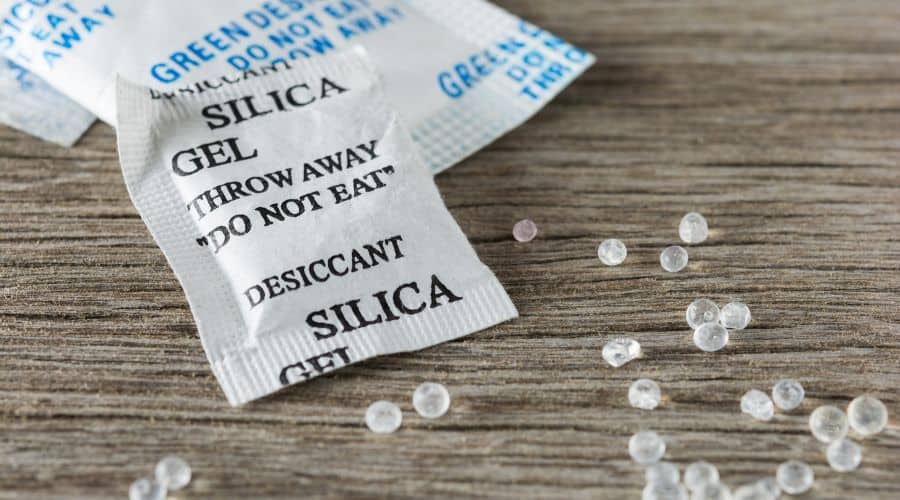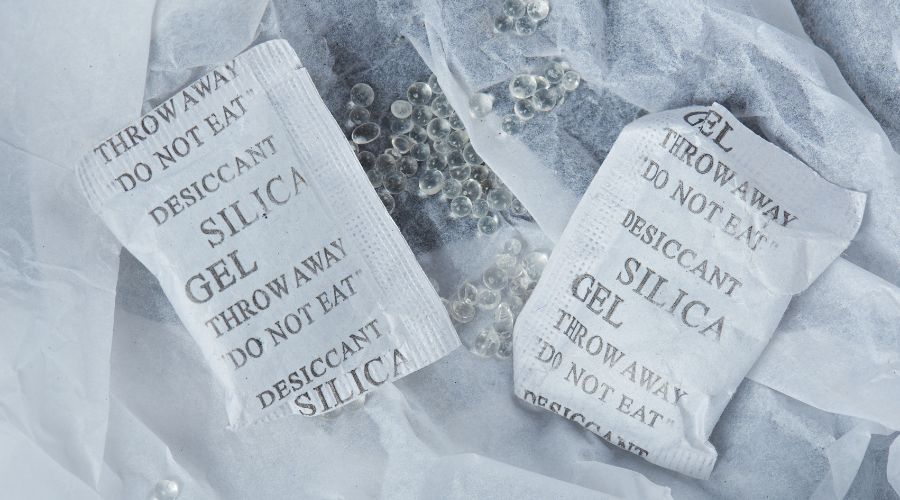There are many ways to get rid of pesky bed bugs. All of them have their pros and cons. By the way, these pests can quickly develop resistance to those agents that, until recently, killed them instantly, for example, pyrethroids. Therefore, people are looking for other effective options.
One such product is bed bug silica gel. While it has been used by professionals and homeowners for over 60 years, many people don’t know about it. In this article, I will tell you why this powder is so good, its disadvantages, and how it kills annoying parasites.
[wpsm_titlebox title=”Should I Use Silica Gel for Bed Bugs?” style=”main”]
- Silica gel is a mammal-safe, relatively inexpensive, and effective treatment.
- It quickly kills bed bugs and has a residual effect that works as a preventative.
- Usually made of sand and kills insects by dehydrating their bodies.
- The most effective form of this material is dry powder.
[/wpsm_titlebox]
What Is Silica Gel?
The word ‘gel’ can be misleading, as it is actually a very fine, light, non-crystalline white powder. It is made from silicon dioxide but, unlike diatomaceous earth, is of synthetic origin. The most common material for making a powder is sand. If you apply this dust in its pure form, its particles will hang in the air, as they are very light.
This greatly complicates the treatment of all areas infested with bed bugs. Therefore, many formulations have additives that solve this problem (for example, petroleum distillate). For ease of application, you can also purchase a liquid spray or dilute the powder with water to make a suspension.
The material has many uses. Since this product is an effective desiccant, it is used in various forms (balls, granules, powder) to get rid of insects and put in boxes with new shoes, clothes, or electronics. It is also widely used in manufacturing cosmetics, medicines, and even foods.

Does Silica Gel Kill Bed Bugs?
Silica gel bed bug killer is an effective remedy to control these wingless insects. Scientific studies have shown that it reduces bed bug populations faster than using diatomaceous earth. This powder kills even generations that have developed resistance to pesticides. It is also worth noting that silica gel does not kill pest eggs, so you should combine this method of getting rid of bed bugs with others.
You can select the more convenient format for you to work with. However, dust in its pure form is much more effective. According to University of Kentucky researchers, if a suspension or spray is used, the bed bug population is reduced by an average of 35% after 1–2 weeks. Dry powder results in more bug mortality ― you can get rid of about 82% of bed bugs in a week.
How Does Silica Gel Help Get Rid of Bed Bugs?
While both diatomaceous earth and silica gel will eventually kill pests from dehydration, these products work differently. Diatomaceous earth, when in contact with the exoskeleton of a bed bug, abrades it, depriving the wax layer.
Without this protective layer on the body’s surface, the insect slowly dies from moisture loss. In contrast, silica gel is a powerful desiccant and immediately absorbs moisture from the bug’s body when it comes into contact with dust. It also actively absorbs protective wax from the body of the pest.
[su_youtube url=”https://youtu.be/2OsLyBXH3rA”]
How to use silica gel for bed bugs
I have a lot of experience getting rid of pests and recommend using dry powder if you want to kill bed bugs quickly. If you still prefer using it with water, the application rules are the same as for dust.
- Use a soft brush to apply the powder. It often comes with a product. You can use a duster to apply the product in hard-to-reach places, as well as in cracks and crevices.
- Silica gel is safe for pets and humans, but there is a risk of dust inhalation, which is not very useful. Therefore, before treating your home, put a mask on your face. Dust can also irritate the skin a little as it is a desiccant. Don’t forget to wear gloves.
- It is not necessary to use a lot of powder. Even a thin layer can kill an insect on contact. Apply desiccant for bed bugs evenly.
- Part of the bed bug population may simply move to another room if you treat one bedroom. Therefore, you should think about where to apply the powder throughout the house to intercept the movement of insects.
- The most suitable places that you need to treat are:
- Flooring transitions and skirting boards;
- Window and door frames;
- Around the perimeter of your bed, at its headboard, under the bed;
- On the floor under other furniture;
- At the joints of furniture;
- Internal drawers of cabinets and bedside tables;
- Carpets;
- The back surface of paintings and photos in frames;
- Electrical sockets.

Advantages and Disadvantages of Using Silica Gel Bed Bug Powder
Using any method to get rid of bed bugs has pros and cons. That is why professionals recommend considering which options are more suitable for you and combining several of them.
Advantages
- Effectively and quickly kills pests;
- It is non-toxic to mammals;
- The powder can be applied into narrow crevices and cracks where bed bugs hide;
- After treating your home, silica gel (depending on the humidity in the room) works as a preventative for a long time. The residual effect can last up to 12 months;
- Compared to many other methods, this one is inexpensive;
- These insects cannot develop resistance to the exposure of their bodies to silica.
Disadvantages
- The use of powder results in more bed bug mortality than the application of a suspension;
- Does not kill eggs;
- For the powder to kill an insect, it must come into contact with it;
- Dust in the air can irritate your eyes. There is also a small risk of inhalation, so remember to wear a mask, goggles, and gloves before use.
FAQ on Silica Gel Bed Bugs Control
For those who first hear about this method of getting rid of bed bugs, there are many questions about the appropriateness of its use and effectiveness.
Does silica gel get rid of bed bugs?
Yes, this is an effective way to get rid of these pests. In addition, this product is safe for people and their pets. The use of silica gel guarantees high population mortality for several days after dusting. However, it does not kill eggs.
How do you use silica gel for bed bugs?
You can use a suspension or dry powder. The powder gives the best results. Simply apply the material in a thin layer throughout your home. Treat the floor under furniture, baseboards, sockets, drawers, and cabinets, cracks, and small gaps.
Is silica gel the same as diatomaceous earth?
These two products are made up of silicon dioxide. But diatomaceous earth is extracted from the fossilized remains of algae, and silica gel is synthesized from the sand. Diatomaceous earth traumatizes the bug’s exoskeleton when the silica gel works as an absorbent.
Simple Solution to a Complex Problem
Those who have ever dealt with bed bugs know that getting rid of them can be a costly and difficult process. Silica gel is a simple and easy method to kill these insects.
However, not everyone knows about it. In any case, you should consider not only the obvious advantages of this method but also its disadvantages. To successfully get rid of the population of bed bugs in the house, I recommend a combination of several remedies.
Do you use multiple methods when getting rid of pests in your home, or do you test them one at a time?
Also read:
References
- Bed bug resistance to insecticides is widespread: https://news.ca.uky.edu/article/bed-bug-resistance-insecticides-widespread-0
- Diatomaceous Earth: http://npic.orst.edu/factsheets/degen.html
- Bed Bugs: Biology and Public Health Risk: https://extension.entm.purdue.edu/publichealth/insects/bedbug.html
- The toxicological mode of action and the safety of synthetic amorphous silica-a nanostructured material: https://pubmed.ncbi.nlm.nih.gov/22349641/

